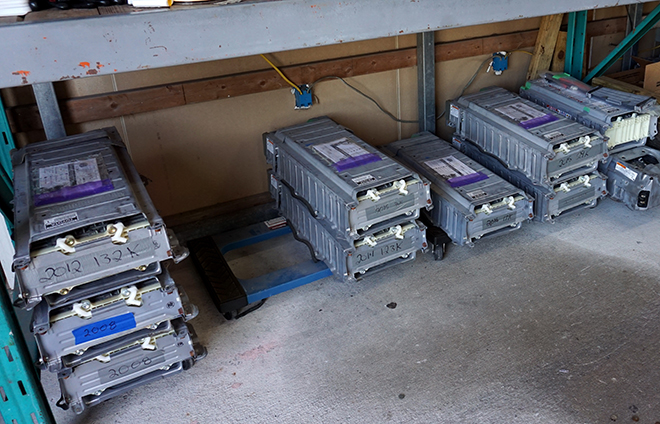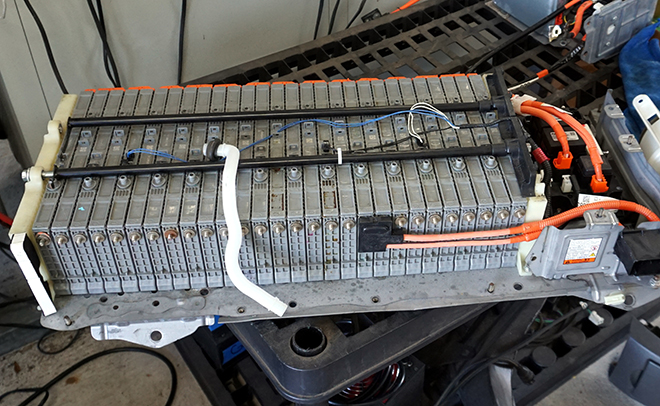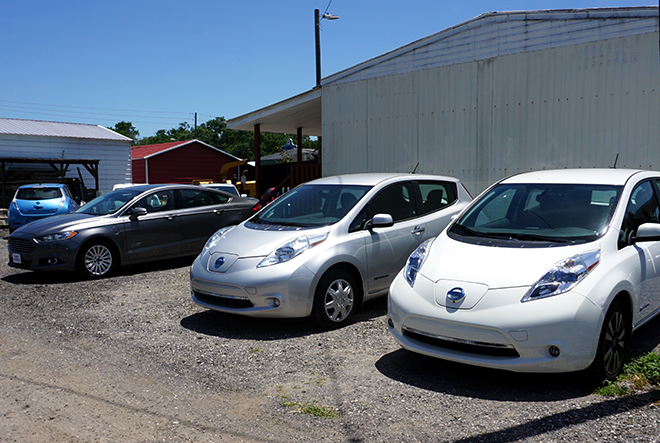EVs haven’t been around long enough, or in great enough numbers, for any large-scale market in replacement batteries to develop. However, Toyota’s Prius hybrid went on sale in the US in 2000, and has sold well over two million units. There’s a lively market for replacement batteries, with both OEM and aftermarket options available.
For a glimpse of what the auto repair shop of the future will look like, stop in at Tampa Hybrids on Florida’s west coast. Instead of carburetors and crankshafts, the shop floor is cluttered with battery packs and modules.


Despite the name, Tampa Hybrids sells and repairs all kinds of electrified vehicles. At the time of my last visit, there were half a dozen LEAFs, an i3, a Ford Fusion Energi and even a Brammo electric motorcycle on the lot. However, the Prius is the bread and butter vehicle.
All electrified vehicles in the US carry a government-mandated 8-year/100,000-mile warranty. According to Tampa Hybrids owner Todd Thompson, a Prius battery should last considerably longer than that – typically 12 to 15 years. When it comes to battery life, calendar age is more important than mileage – batteries with 200,000 miles are not uncommon.


Factors that can shorten battery life in any electrified vehicle include hot climates and long periods of disuse – two situations that are common in Florida. Unfortunate cars belonging to “snowbirds” (seasonal residents) may sit idle, baking in the sun through the hottest months of the year, and this will quickly ruin a battery. A carport, or even tinted windows or a sunshade, is a good investment. Toyota’s optional solar sunroof ventilates the vehicle when it sits idle, cooling the interior and prolonging battery life.
When a Prius battery fails, there are three options: a new battery from Toyota ($2,400 installed at Tampa Hybrids, a bit more at a Toyota dealer), a reconditioned battery from an aftermarket installer such as Greentec Auto (somewhere around $1,500) or a used battery salvaged from a wrecked or upgraded vehicle (from $800 up, depending on age).
Todd discourages option #2, and illustrates with a colorful analogy: “If your 80-year-old grandmother gets an artificial hip, the new hip may work fine, but everything else is still 80 years old, and that’s what you have with a reconditioned battery. All you’ve done is replace the few defective cells with equally old cells, maybe 10-15 years old, and hopefully balanced them.” Sooner or later the other cells will fail too. “Nothing against the companies that install reconditioned batteries, but it’s the product – you can’t make old new again.”


Todd often replaces older batteries with newer, salvaged ones. For those with mechanical skills, it’s feasible to buy a used battery from a junkyard and install it yourself. “There are 28 modules in each pack, and each module has 6 cells,” Todd explains. “Take the modules out and move them to your battery pack, and clean up or replace the busbars.”
Most Prii use a nickel-metal hydride battery. However, all plug-in versions, and the optional Eco version (available from the 2016 model year) use a lithium-ion battery, which Todd believes holds up better to hot weather or periods of idleness. That’s why he often recommends a Prius Plug-In as a used vehicle. Also, like most plug-in vehicles, the PPI was offered only with the higher trim levels, so you can get a better package of options than you typically would on a pre-owned vehicle.
This article originally appeared in Charged Issue 38 – July/August 2018 – Subscribe now.



















































